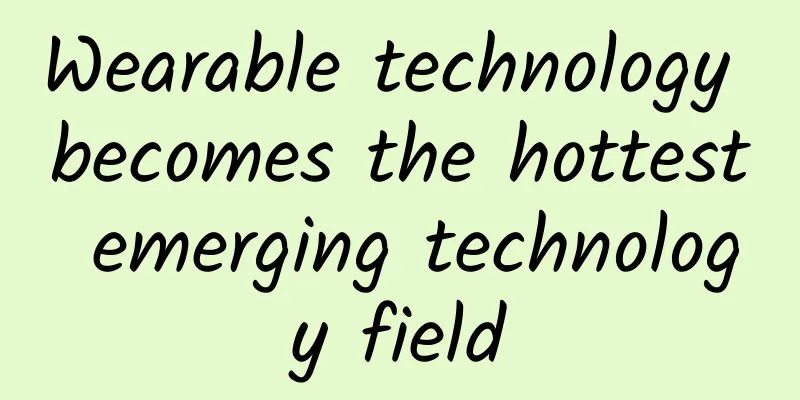Wearable technology becomes the hottest emerging technology field

|
Wearable technology has become the hottest emerging technology sector. Manufacturers across industries such as fashion, sports and technology are actively introducing new models to seize the lucrative market opportunities. Although this new market segment has great potential, its sales have lagged so far. So far, consumers are not well aware of the technology and have not yet realized the value of wearable devices that have surpassed traditional activity trackers. There is a general feeling that wearable devices are just niche products for "geeky" gadgets, rather than "necessities" for emerging technology consumption. In response, market research company GfK conducted an online survey of 1,000 smartphone users in China, Germany, South Korea, the United States and the United Kingdom to understand their use and attitudes towards smart watches and activity trackers. Smartphones set the gold standard Obviously, smartphones are the standard by which consumers measure smartwatches, but wearables are not yet close to reaching or even approaching the same status as smartphones, which are now part of daily life for millions of people around the world. However, wearables show greater potential than smartphones to bring people closer to technology, with innovations such as smartwatches, fitness armbands and data glasses that are now commonly used with smartphones. The study shows that consumers expect touch-based, not voice-based, wearables: 67% want a touchscreen smartwatch, 24% prefer voice control and 8% choose buttons. Tellingly, 90% of consumers want similar software on their smartwatch and smartphone. The data shows that consumers expect a similar experience from their smartwatch as they do on their smartphone, which shows the limitations of how consumers can differentiate between devices. We really don't mind separate SIM card or compatible device There was little difference in preference between choosing a device that works with a smartphone or one that has a separate SIM card. 56% of respondents said they would be happy to choose a smartwatch that operates independently of a smartphone. This figure rises to 88% in China, but drops to 44% in South Korea, indicating that consumer attitudes vary significantly by region. Therefore, manufacturers may need to significantly adjust their products to meet different market needs. However, by increasing product differentiation, brand manufacturers can help position SIM-based smartwatches as higher-end devices. Wearables open a gateway to the Internet of Things, but can consumers take control? The survey shows that consumers understand the potential applications of this technology and are somewhat enthusiastic about using wearable devices to connect to the Internet of Things. This preference is particularly evident when consumers interact with mature technology products such as smartphones and TVs through smart watches. If consumers can control remotely through smart watches, 46% of people said they would use it to control the TV, followed by controlling the home audio system and computer (both accounted for 39%). Interaction with smart homes and cars is also a popular application among consumers: 49% of consumers prefer to use smart watches to control smart homes, while 47% of consumers choose car control. Chinese consumers are most active in choosing functions in these two situations. Consumers are enthusiastic about the health and safety applications of smart watches : for example, 46% of consumers are happy to use smart watches to store health information, and 45% will use them for security identification. As a typical example of new technology, consumers still have doubts about the use of smart watches for payment and wireless payment, especially in the face of the development of the Internet of Things. Compared with China and the United States, German consumers are more cautious. Price is the primary criterion When choosing a smartwatch, price (21%), functionality (14%) and activity tracking (13%) were listed as the most important criteria. Price was not listed in the top three in China, while it was the first criterion in other countries. Accuracy (17%) was considered critical by Chinese consumers. Another significant difference was the emphasis Chinese consumers placed on brand, with 15% of Chinese respondents considering brand as the most important factor, compared to 8% of the overall criteria. Technology brands dominate — fashion and sports brands compete for market share The wearable market has been flooded with brands from various industries, giving consumers a lot of choices when buying smart watches. Despite the influx of some cross-industry brands, technology brands are still the most popular among consumers. Nearly two-thirds (65%) of consumers believe that they are most likely to buy smart watches from technology brands, and 18% will choose sports brands. Compared with more than half (57%) of consumers in China who choose technology brands, South Korea has a preference for 76%. These data show that although wearable devices are a product category that is extremely easy to cross with other industries, consumers still strongly believe that wearable devices are first and foremost a technological purchase rather than a lifestyle accessory. |
<<: eMarketer: WeChat is unlikely to become a marketing tool for international companies in China
>>: Piper Jaffray: Survey shows Apple iOS devices dominate enterprise market
Recommend
What are the most likely causes of upper abdominal pain? Is cancer a high probability?
The causes of upper abdominal pain vary and may i...
What are the symptoms and dangers of thin uterine wall?
Relatively speaking, some women have a thinner ut...
What to do if you feel bad after abortion
After an abortion, due to the changes in hormones...
Illustration of exercises to help with childbirth
After pregnancy, many pregnant mothers may be &qu...
Why do I have breast pain a week before my period?
Breast pain is a common condition among female fr...
Why is menstruation late?
If there is anything normal about menstruation, t...
What is the treatment for endometrial hyperplasia?
The female uterus is relatively fragile and can e...
What are the nutritional values of shiitake mushrooms? How to clean shiitake mushrooms
Shiitake mushrooms are high in protein, low in fat...
Leucorrhea routine sialidase
I believe that everyone has a certain understandi...
What's wrong with a sudden heavy menstruation?
Sometimes, changes in our menstruation are very s...
What are the villous labia minora?
In recent years, the incidence of gynecological d...
Can I eat hazel mushrooms during menstruation?
Hazel mushroom is a very precious mushroom that g...
What do contractions feel like?
Pregnant women will experience uterine contractio...
Can I eat breakfast on the day of transplant?
In recent years, there have been a lot of transpl...
How to take vitamin supplements during pregnancy
In order to ensure that their babies and themselv...









